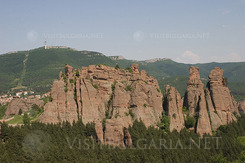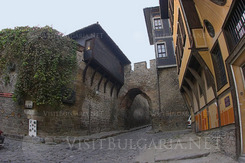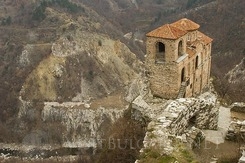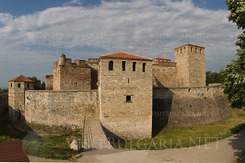Over one billion euro has been invested in the wellness and spa industry in Bulgaria over the past more...
| Search | Hotels / Accommodation | Vacations | Tours & Trips | Rent A Car | Transport | Flights | Conferences | Press Centre | Yachting |
- Holidays in Bulgaria
- All inclusive
- Beach
- Birdwatching
- Golf
- Health
- History
- Hunting
- Monasteries/ Religious
- Mountain biking
- Prom
- Rural
- Ski
- Spa & Wellness
- Trekking
- Water sports
- Weekend breaks
- Wine
- Conference
- Children Holidays
- Yachting
- Events
- Type of accommodation
- Hotels
- Apartments
- Villas
- Rural houses
- Destinations
- Aheloy
- Ahtopol
- Albena
- Apriltsi
- Arbanassi
- Asparuhovo
- Assenovgrad
- Bachkovo Monastery
- Balchik
- Bankya
- Bansko
- Banya (Karlovo)
- Banya (Razlog)
- Batak
- Beklemeto
- Belchin Bani
- Beli Iskar
- Belogradchik
- Berkovitsa
- Blagoevgrad
- Bodrost
- Bojichen
- Borovets
- Botevgrad
- Bourgas
- Bozhentsi
- Bratsigovo
- Brestovitsa
- Buzludja
- Byala
- Chepelare
- Cherepish Monastery
- Chernomorets
- Chiflik
- Devin
- Dimitrovgrad
- Dobarsko
- Dobrich
- Dobrinishte
- Dolna Banya
- Dospat
- Dryanovo
- Dupnitsa
- Dyuni
- Elena
- Elenite
- Elhovo
- Gabrovo
- Gela
- Golden Sands
- Gorna Oryahovitsa
- Gotse Delchev
- Govedartsi
- Grand Hotel Varna
- Harmanli
- Haskovo
- Haskovo Mineral Baths
- Hissarya
- Ivaylovgrad
- Kalofer
- Kamchia
- Kamen Bryag
- Kardjali
- Karlovo
- Kavarna
- Kazanlak
- Kiten
- Kom
- Koprivshtitsa
- Kosharitsa
- Kostenets
- Kostenkovtsi
- Kotel
- Kovatchevitsa
- Kranevo
- Kresna
- Kulinoto
- Kyustendil
- Lom
- Lovech
- Lozenets
- Lukovit
- Lyaskovets
- Madara
- Malko Tarnovo
- Malyovitsa
- Melnik
- Mezdra
- Momchilovtsi
- Montana
- Narechen Baths
- Near Golden Sands
- Nessebar
- Obzor
- Ognyanovo
- Osogovo
- Pamporovo
- Panagyurishte
- Panichishte
- Parshevitsa
- Pavel Banya
- Pavlikeni
- Pazardjik
- Pernik
- Petrich
- Pirdop
- Pleven
- Pliska
- Plovdiv
- Pomorie
- Pravets
- Preslav
- Primorsko
- Ravda
- Razgrad
- Razlog
- Ribaritsa
- Rila Monastery
- Riviera
- Rousse
- Rusalka
- Samokov
- Sandanski
- Sapareva Banya
- Semkovo
- Sevlievo
- Shabla
- Shipka
- Shipkovo
- Shiroka Laka
- Shkorpilovtsi
- Shoumen
- Silistra
- Sinemorets
- Sliven
- Smolyan
- Sofia
- Sopot
- Sozopol
- Srebarna
- St. Constantine & Elena
- Stara Zagora
- Starozagorski Baths
- Sunny Beach
- Sunny Day
- Sveti Vlas
- Svilengrad
- Svishtov
- Targovishte
- Teteven
- Tran
- Trigrad
- Troyan
- Tryavna
- Tsarevo
- Tsigov Chark
- Uzana
- Varna
- Varshets
- Veliko Tarnovo
- Velingrad
- Vidin
- Vitosha
- Voneshta Voda
- Vratsa
- Vratsata Gorge
- Yagoda
- Yakoruda
- Yambol
- Zlatitsa
- Zlatograd
- Bulgaria Guide
- General information
- Bulgarian Monasteries
- SPA Bulgaria
- The Black sea
- History
- Geography
- Maps
- Weather
- Airports in Bulgaria
- Webcams
- Forums
- Mountains in Bulgaria
- The Balkan Mountain Range
- Rila Mountain
- Pirin Mountain
- The Rodope Mountain
- Vitosha Mountain
- Travel Arrangements
- Visit Bulgaria
- Visa Requierments
- Choose Destination
- Flights to Bulgaria
- Transport in Bulgaria
- Advice
- Currency
- Official Holidays
Subscribe to newsletters to receive our hottest offers:
Shared Heritage: cross-Balkan cultural tourism corridor
Bnr.bg, Roumyana Panayotova, Daniela Konstantinova

Bulgaria jointly with Greece and Romania has been building the so-called cross-Balkan corridor for cultural tourism. The route will join the European network of similar routes crossing borders and connecting major heritage sites in different countries and regions.
With the motto Shared Heritage the three Balkan countries unite a whole network of heritage sites from different periods in history. They have been selected thematically and have been arranged starting from Romania’s northern border, crossing Bulgaria and reaching the southern coasts of Greece. The cross-Balkan corridor cuts across the middle of the peninsula. Its strategic location will allow tourists to trace cultural and historical ties between the three countries, as well as to discover the specific characteristics of their national heritage.
 Heritage and tourism experts from the three countries have been working on the project for almost two years. The selection of sites has completed. Architect Prof. Todor Krastev says more about the Bulgarian section of the route.
Heritage and tourism experts from the three countries have been working on the project for almost two years. The selection of sites has completed. Architect Prof. Todor Krastev says more about the Bulgarian section of the route.
“The Bulgarian section of the cross-Balkan corridor starts from the Danubean City of Russe, heads to Bulgaria’s medieval capital Veliko Tirnovo, then to Gabrovo, across the Balkan Range all the way to Stara Zagora in Southern Bulgaria. Its next stopover is the ancient City of Plovdiv.
 Before entering Greece the route crosses the eastern portion of the Rhodope Mountains. The Bulgarian section highlights heritage dated to various epochs. The earliest dated site is the prehistoric Neolith settlement in Stara Zagora. Unsurprisingly the route also makes a stopover in the Valley of Thracian Kings near the town of Kazanluk. The local medieval civilization is beautifully represented in Veliko Tirnovo. Another medieval heritage stopover is near Russe – the Ivanovo rock monasteries featuring on the UNESCO World Heritage List.
Before entering Greece the route crosses the eastern portion of the Rhodope Mountains. The Bulgarian section highlights heritage dated to various epochs. The earliest dated site is the prehistoric Neolith settlement in Stara Zagora. Unsurprisingly the route also makes a stopover in the Valley of Thracian Kings near the town of Kazanluk. The local medieval civilization is beautifully represented in Veliko Tirnovo. Another medieval heritage stopover is near Russe – the Ivanovo rock monasteries featuring on the UNESCO World Heritage List.
 The cross-Balkan cultural tourism route promotes the period of the Bulgarian National Revival of the 18 and 19 c. with sites in Gabrovo and Arbanassi in the Balkan Range. The City of Russe on the Danube is precious with the lovely examples of central European architecture from the late 19 and early 20 c. The southern Bulgarian City of Plovdiv is a unique place that offers a beautifully preserved Roman amphitheater but also a fascinating Old Town with one of the most prominent achievements of National Revival architecture. From Plovdiv the route heads south to the Eastern Rhodope Mountains dotted with a myriad Christian monuments. It has 20 ancient churches, more than 200 chapels and four monasteries, including Bachkovo Monastery which originated in 11 c.”
The cross-Balkan cultural tourism route promotes the period of the Bulgarian National Revival of the 18 and 19 c. with sites in Gabrovo and Arbanassi in the Balkan Range. The City of Russe on the Danube is precious with the lovely examples of central European architecture from the late 19 and early 20 c. The southern Bulgarian City of Plovdiv is a unique place that offers a beautifully preserved Roman amphitheater but also a fascinating Old Town with one of the most prominent achievements of National Revival architecture. From Plovdiv the route heads south to the Eastern Rhodope Mountains dotted with a myriad Christian monuments. It has 20 ancient churches, more than 200 chapels and four monasteries, including Bachkovo Monastery which originated in 11 c.”
 The cross-Balkan cultural corridor covers a series of thematic routes for tourists with various interests: folklore, traditions, local cuisine, crafts, festivals and contemporary art. The route goes by wonderful natural sites offering breathtaking vistas. At international fairs the cross-Balkan heritage corridor will be marketed as a common tourism destination. Bulgaria and Romania’s accession to EU has promoted trips in the region. Now the two new members can more effectively ally with Greece for major projects in tourism.
The cross-Balkan cultural corridor covers a series of thematic routes for tourists with various interests: folklore, traditions, local cuisine, crafts, festivals and contemporary art. The route goes by wonderful natural sites offering breathtaking vistas. At international fairs the cross-Balkan heritage corridor will be marketed as a common tourism destination. Bulgaria and Romania’s accession to EU has promoted trips in the region. Now the two new members can more effectively ally with Greece for major projects in tourism.

















